#constable roberts
Explore tagged Tumblr posts
Note
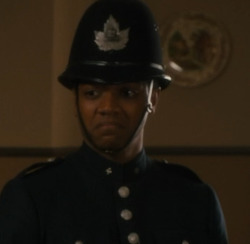

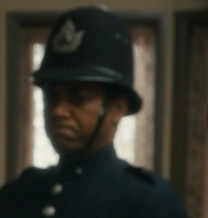
incredibly obsessed with teddys reactions to henry. dude was so bad at acting it had him going ☹️
Me when group reading in my English class/j
On a serious note as a constable Roberts fan I have been fed SO WELL lately like wdym I can watch the episodes knowing one of my blorbos is part of the main cast?(??!!?! VERY SO VERY GLAD YOU JOINED THE CLUB(cult/j)
#stitchsnintendoswitch#murdoch mysteries#mm season 18#the brainrot is real#the joys of having a character who’s the newest addition to the main cast as one of your blorbos#constable roberts#expert correspondence
8 notes
·
View notes
Text

#murdoch mysteries#henry higgins#constable tucker#detective watts#constable roberts#my drawing attempts .#thomas brackenreid#meme#fr 😅🧡#mm spoilers
14 notes
·
View notes
Link
Chapters: 1/1 Fandom: Murdoch Mysteries Rating: Not Rated Warnings: Creator Chose Not To Use Archive Warnings Relationships: Detective Watts & Constable Roberts (Murdoch Mysteries) Characters: Llewellyn Watts, Teddy Roberts Additional Tags: Coming Out, Friendship, Trust, Conversation, Shared Experience Summary:
Watts comes out to Roberts after 18x15, haven't written anything for this show before but this episode made me want to see this so I wrote it
#murdoch mysteries#detective watts#constable roberts#fanfic#I love them actually I think they have the potential for a fantastic friendship#so hope we get somewhere like this by the end of the season
3 notes
·
View notes
Text
Welcome back, George Crabtree. I’ve missed you.
#this season has been weird#i don’t do well with change#and I’ve really felt the absence of George and Julia and it feels like Thomas hasn’t been around as much since his promotion#i like the addition of Constable Roberts but i’m not really feeling Inspector Choi#murdoch mysteries
4 notes
·
View notes
Text
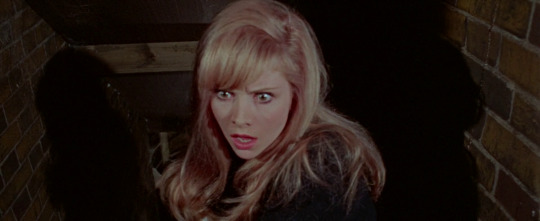
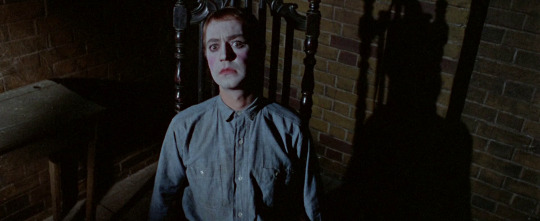
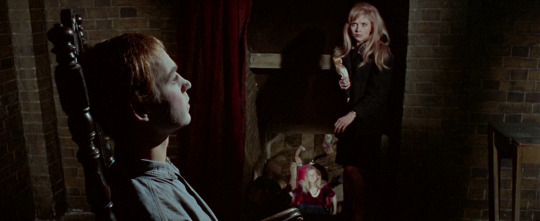
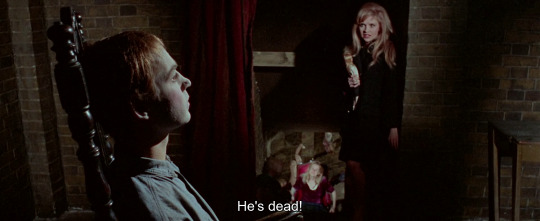
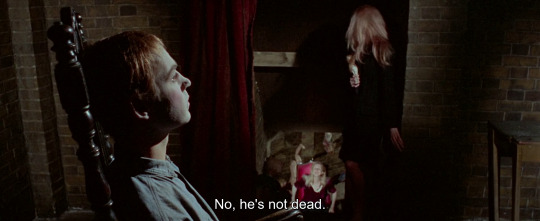
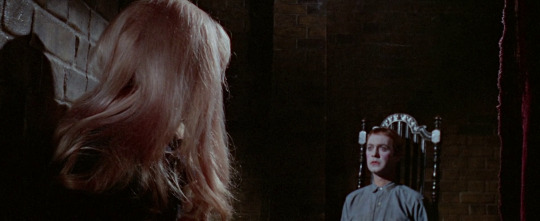
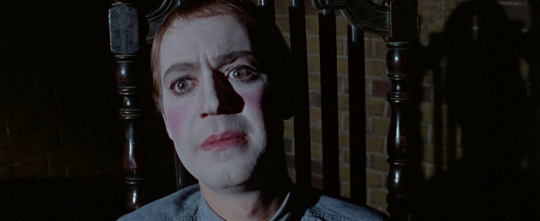
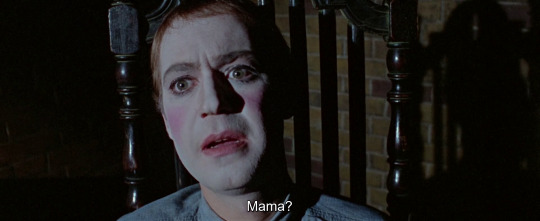

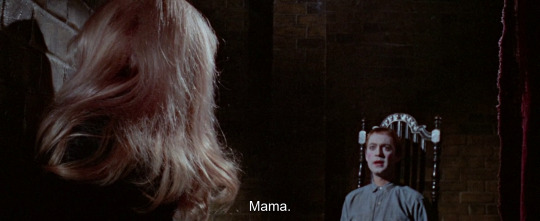
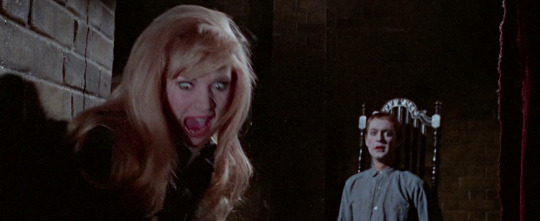
The Psycopath (Freddie Francis, 1966).
#the psycopath#freddie francis#robert bloch#Margaret Johnston#Judy Huxtable#John Wilcox#Oswald Hafenrichter#bill constable#scott slimon
5 notes
·
View notes
Text








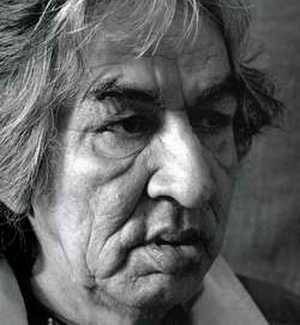
Norval Morrisseau, CM (1932 – 2007), also known as Copper Thunderbird, was an Aboriginal Canadian artist. Known as the "Picasso of the North", Morrisseau created works depicting the legends of his people, the cultural and political tensions between native Canadian and European traditions, his existential struggles, and his deep spirituality and mysticism. His style is characterized by thick black outlines and bright colors. He founded the Woodlands School of Canadian art and was a prominent member of the “Indian Group of Seven”.
An Anishinaabe, he was born March 14, 1931 on the Sand Point Ojibway reserve near Beardmore, Ontario. Some sources quote him as saying that he was born in Fort William, now part of Thunder Bay, Ontario, on the same date in 1931. His full name is Jean-Baptiste Norman Henry Morrisseau, but he signs his work using the Cree syllabics writing ᐅᓵᐚᐱᐦᑯᐱᓀᐦᓯ (Ozaawaabiko-binesi, unpointed: ᐅᓴᐘᐱᑯᐱᓀᓯ, "Copper/Brass [Thunder]Bird"), as his pen-name for his Anishnaabe name ᒥᐢᒁᐱᐦᐠ ᐊᓂᒥᐦᑮ (Miskwaabik Animikii, unpointed: ᒥᐢᑿᐱᐠ ᐊᓂᒥᑭ, "Copper Thunderbird").
In accordance with Anishnaabe tradition, he was raised by his maternal grandparents. His grandfather, Moses Potan Nanakonagos, a shaman, taught him the traditions and legends of his people. His grandmother, Grace Theresa Potan Nanakonagos, was a devout Catholic and from her he learned the tenets of Christianity. The contrast between these two religious traditions became an important factor in his intellectual and artistic development.
At the age of six, he was sent to a Catholic residential school, where students were educated in the European tradition, native culture was repressed, and the use of native language was forbidden. After two years he returned home and started attending a local community school.
At the age of 19, he became very sick. He was taken to a doctor but his health kept deteriorating. Fearing for his life, his mother called a medicine-woman who performed a renaming ceremony: She gave him the new name Copper Thunderbird. According to Anishnaabe tradition, giving a powerful name to a dying person can give them new energy and save their lives. Morrisseau recovered after the ceremony and from then on always signed his works with his new name.
Morrisseau contracted tuberculosis in 1956 and was sent to Fort William Sanatorium to recover. There he met his future wife Harriet Kakegamic with whom he had seven children, Victoria, Michael, Peter, David, Lisa, Eugene, and Christian.
After being invited by Ontario Provincial Police Constable, Robert Sheppard, to meet the artist, the anthropologist Selwyn Dewdney, became an early advocate of Morrisseau's and was very interested in Morrisseau's deep knowledge of native culture and myth. Dewdney was the first to take his art to a wider public.
Jack Pollock, a Toronto art dealer, helped expose Morrisseau's art to a wider audience in the 1960s. The two initially met in 1962 while Pollock was teaching a painting workshop in Beardmore. As Pollock did not drive, Susan Ross whom Morrisseau had met in 1961 and Sheila Burnford drove Pollock to visit Morrisseau at his home to view more of his works. Immediately struck by the genius of Morrisseau's art, he immediately organized an exhibition of his work at his Toronto gallery.
This is a part of the Wikipedia article used under the Creative Commons Attribution-Sharealike 3.0 Unported License (CC-BY-SA). The full text of the article is here →
97 notes
·
View notes
Text


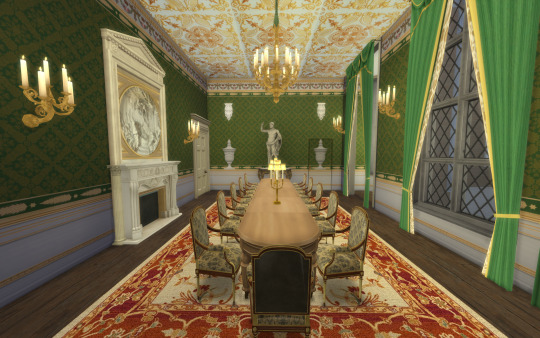
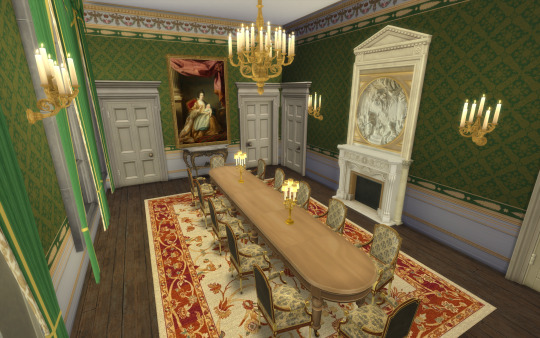
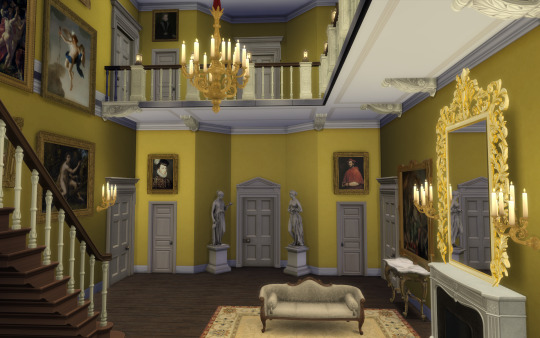

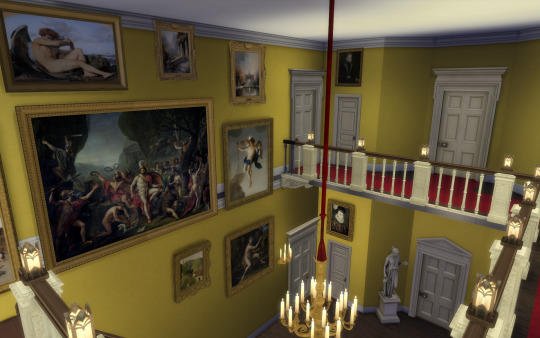
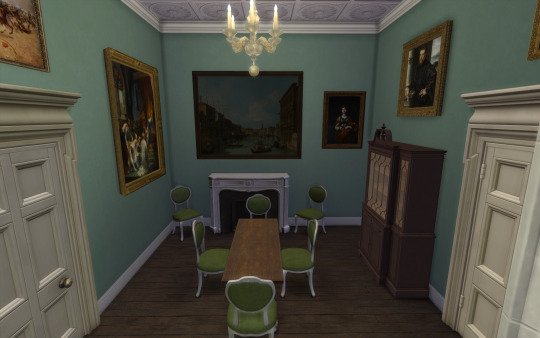
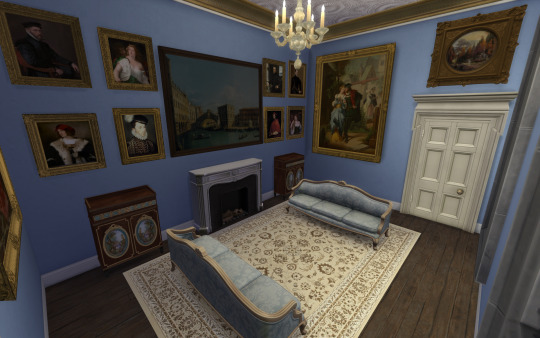

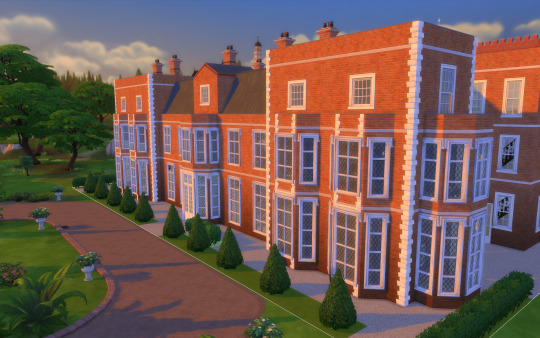

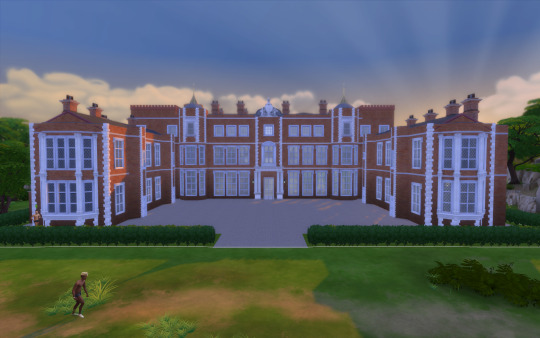
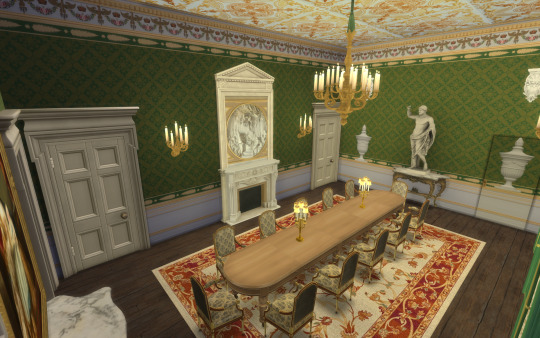
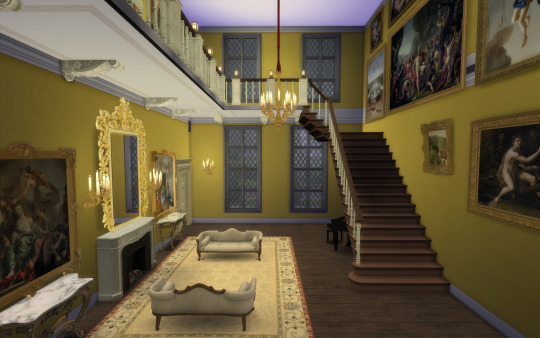





Burton Constable Hall
Hi guys!!
I'm sharing Burton Constable Hall. This is the 19th building for my English Collection.
I decorated most of the house ground floor, for reference.
History of the house: Burton Constable Hall is a large Elizabethan country house in England, with 18th- and 19th-century interiors.
Despite its apparent uniformity of style, Burton Constable has a long and complicated building history. The lower part of the north tower, built from limestone, is the oldest part of the house to survive and dates to the 12th century, when a medieval pele tower served to protect the village of Burton Constable from the time of the reign of King Stephen. In the late 15th century a new brick manor house was built at Burton Constable, eventually replacing Halsham as the family's principal seat. In the 1560s Sir John Constable embarked on the building of the Elizabethan prodigy house that stands today. This incorporated remains of the earlier manor house along with the addition of the new range containing a Great Hall, which rose the full height of the building and was top-lit by a lantern, along with a Parlour, Chambers and South Wing.
By the 18th century, the Great Hall must have seemed old fashioned, and a surviving design of c. 1730 suggests that Cuthbert Constable intended to completely remodel the interior. However, it appears that remodelling was not undertaken until the 1760s when his son William Constable commissioned a number of architects for designs. These included John Carr, Timothy Lightoler and Capability Brown. The decorative plasterwork was executed by James Henderson of York. At this time, Constable also acquired the plaster figures of Demosthenes and Hercules with Cerberus, and plaster busts of the Roman emperor Marcus Aurelius Antoninus and the Greek poet Sappho, from the sculptor John Cheere. Above the fireplace is a carving of oak boughs and garlands of laurel leaves, crowned by the Garter Star, surrounding the armorial shield of the Constable family in scagliola by Domenico Bartoli.
The dining room was substantially remodelled by William Constable in the 1760s, who commissioned designs from Robert Adam, Thomas Atkinson, and Timothy Lightoler (who won the commission). The ceiling draws on contemporary interest in the excavations at Pompeii and Herculaneum, with plasterwork by Giuseppe Cortese. The overmantel plaque of Bacchus and Ariadne riding on a panther was modelled on famous antique cameos illustrated in Pierres Antiques Gravées, published 1724 by Philip, Baron von Stosch and Bernard Picart. This room was again redecorated in the 19th century.
Link: https://en.wikipedia.org/wiki/Burton_Constable_Hall
------------------------------------------------------------------------------
This house fits a 50x50 lot.
I only decorated some of the important rooms. All the rest of the house is up to your taste to decor.
Hope you like it.
You will need the usual CC I use:
all Felixandre cc
all The Jim
SYB
Anachrosims
Regal Sims
King Falcon railing
The Golden Sanctuary
Cliffou
Dndr recolors
Harrie cc
Tuds
Lili's palace cc
Please enjoy, comment if you like the house and share pictures of your game!
Follow me on IG: https://www.instagram.com/sims4palaces/
@sims4palaces
Download: https://www.patreon.com/posts/112319879
Public: 21/10/2024
#sims 4 architecture#sims 4 build#sims4#sims 4 screenshots#sims4building#sims 4 historical#sims4play#sims4palace#sims 4 royalty#ts4#ts4 download#ts4 simblr#ts4 gameplay#ts4 screenshots#sims 4#the sims 4#sims#simblr#sims 4 gameplay#my sims#the sims#sims build#sims 4 simblr
83 notes
·
View notes
Text
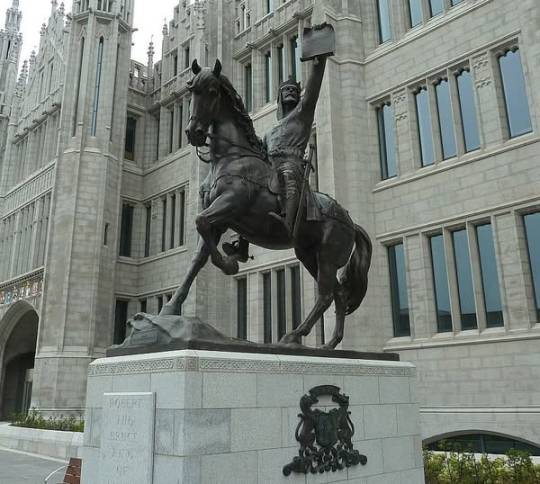
On March 16th 1309 King Robert the Bruce convened his first parliament, at St Andrews.
After the Declaration of the Clergy in February the King was starting to establish himself as the recognised Monarch of Scotland, this was a significant point in his reign.
By 1306, when Robert I seized the throne, there might have been some expectation that the prominent role for the community of the realm in the government of the kingdom that had arisen since 1286 would continue. Yet no king voluntarily accepts limits upon his powers, and Robert I restored royal authority, removing the ability of the community to play a significant role in the formulation of parliamentary acts. The king used the rhetoric of community and parliamentary authority that had evolved since 1286 to give his actions a façade of broad support that they often did not have. Parliament became a tool for creating documents designed to validate and augment the king’s authority by the public display of support for his kingship.
I’ve said it before, most recently with the post in February on the Declaration of the Clergy, these were tools used to send a message to England that the Scots were functioning normally, propaganda tools. The same tools are still being used nowadays, only in a modern way, you just have to look Ukraine and President Zelenskyy, with his daily updates and speaking at other countries parliaments via video links, he is sending out a message to the Russians that Ukraine is still functioning, much in the same way Scotland let other countries know that we continued to repel the English Usurpers, Edward I’s death two years before must have been encouraging for Bruce, Longshanks son was certainly not a warrior like his father. The most famous piece of propaganda we sent out was The Declaration of Arbroath in 1320, although the first of note from Scotland was The Lübeck letter in 1297.
The Bruce was still trying to unite the Scots against their common enemy, the meeting of parliament, therefore, was a useful means of engineering declarations of support for the king, or of manipulating collective decision-making. At this time, the Scottish magnates sent a letter to King Philip IV of France in response to his request for assistance in a crusade. The Scots replied expressing their support for Bruce as king, reminding Philip of Scotland’s devastation by war, and promised help when peace was achieved.
The letter reads:
“Letters: by the magnates of Scotland to Philip IV, king of France.
To the most Christian and triumphant prince and reverend lord the lord Philip [IV] by the grace of God illustrious king of the French, William, earl of Ross, Malcolm, earl of Lennox, William, [earl of Suther]land, and the communities of the earldoms of Fife, Menteith, Mar, Buchan and Caithness, the heirs of which are in ward, likewise the communities of all the other earldoms of the kingdom of Scotland [except]† [D]unbar; Edward de Bruce, lord of Galloway, James the steward of Scotland, Alexander de Argyll, Donald de Islay, John de Menteith, Hugh, the son and heir of the earl [of Ross]†, Gilbert de Hay, constable of Scotland, Robert de Keith, marischal of Scotland, Thomas Randolph, lord of Nithsdale, James, lord of Douglas, Alexander de Lindsay, Alexander de [Fraser], [William] Wiseman, David de Barclay, Robert Boyd, barons; and also all of Argyll and the Hebrides and the inhabitants of all the kingdom of Scotland recognising the fealty of the lord Robert by the grace of God king of Scotland, all [… … ….] Your credence having been revealed to us in writing, and having been fully understood [by us], in the full parliament of our lord the king solemnly held not long ago at the city of St Andrews, impressed upon our minds the joyfulness of [your] devot[ion] [… … ….] For we conclude that your majesty’s mind is devoutly disposed to take on the business of the Holy Land, to prosecute which all followers of the Christian faith justly ought to strive and with humble devotion incline their hearts [… … …,] we saw that it was contained [in your letter] that your royal grace considers and calls to mind the treaties between the kingdoms of France and Scotland, made long ago and confirmed; also the losses, harms and injuries which the inhabitants of the kingdom [… … …] have suffered in many ways hitherto. The particular and special affection which, in that credence, you say you have towards the person of our lord Robert by the grace of God king [of Scots … …] [whom] justice and truth and the grace of the King of Kings has raised up as our prince and leader, cheers our hearts above all else. We therefore noting, with heartfelt feelings, the aforesaid, as we are bound in duty to do [… … …] [?commend] your right royal devotion towards the business of the Holy Land, and for the affection which you have towards our lord the king, and we return thanks as best we can to your majesty for restoring the liberties and rights of the kingdom of Scotland, praying to God that ‘by the bowels of mercy of Jesus Christ’ that you may bring to fulfilment the devout purpose which you have conceived in your mind, trough our Lord’s inspiration in relation to the aforesaid, with holy desire, and efficacious eagerness and a safe outcome. May your royal majesty deign to take note, with pious mind, that in the exaltation of Christian princes the name of Christ is extolled and the Catholic faith strengthened. If, therefore, the standing of our lord [the king whom] we say unanimously is [… … …], is exalted and the kingdom of Scotland returns to its former free condition, the tempests of war having been quelled and secure peace having been granted, then your royal highness will be able to have as supporters to achieve the end of your desire, the service of God, and to come to your help, not only our lord the king aforesaid, but also the inhabitants of his kingdom as best they are able. And as [evidence of] the aforesaid things [… …] clearly these letters sealed by our seals were commanded to be sent patent to your highness. Written and given at the city of St Andrews in Scotland 16 March 1308 [1309] and in the third year of our lord King Robert’s [reign].
I know it’s not an easy read, but I have taken this straight from the web page of The Records of the Parliament of Scotland here https://www.rps.ac.uk/trans/1309/2 . Check the side bar for more records from 1308, when an assembly was held and William, earl of Ross, recorded his act of homage to Robert I before an assembly of prelates and nobles.
The second photo is a Letter by the magnates of Scotland regarding the right of King Robert I to the Crown of Scotland, 16 March 1309, an extract reads:
… we see it contained that royal gratitude reflects on and brings back to mind the alliances formerly existing and maintained between the kingdoms of France and Scotland and the losses, sufferings and trials which the inhabitants of the kingdom have hitherto so much endured. Our minds are cheered, above all, by the extraordinary and peculiar affection which… you say you have for the person of lord Robert, by the grace of God our lord king, who has been raised up as our leader and prince by right and truth and by the justice and grace of the King of Kings. We therefore… [?commend] your royal devotion for the affairs of the holy land… and for the regard you have towards our lord king, and we return all the thanks we can to your royal majesty for the restoration of the liberties and rights of the kingdom of Scotland.
… If therefore… the kingdom of Scotland [be] restored to its original liberty, the storms of war extinguished, the security of peace granted… your highness may have at power not only our lord the king aforesaid but also the inhabitants of his realm.
52 notes
·
View notes
Text
May Prompts (25)
Day 24 here. Start from the beginning here. Day 26 here.
Intuition
He may not be Sherlock Holmes, but he trusts his intuition.
In fact, right now his intuition is probably a hell of a lot more reliable than Sherlock’s. He’s seen what Sherlock will do when blinded by anger.
It’s time for Captain Watson to take control.
“Don’t look out the window,” he hisses through a smile. “Keep looking at me or Rosie. Look happy.”
“But John—“ Sherlock argues, gesticulating wildly.
“Sherlock. Trust me.” He knows his tone leaves no room for argument. Even from the great Sherlock Holmes.
Sherlock freezes and then starts fidgeting slightly awkwardly. He seems almost … flustered. But then he gives a tiny nod and plasters on a fake smile while keeping his eyes firmly on Rosie.
“Good. Now, you are going to get up and go order two coffees. And I am going to call Mrs. Hudson and ask her to pick up Rosie from here.” He looks at his daughter who is happily scribbling with the crayons and blank paper they brought. He thinks maybe he can see some hearts among her chaos of lines. “We aren’t doing anything until we get Rosie out of here.”
That seems to get through to Sherlock. “Right. Of course. Coffees.”
They proceed with their tasks and soon are back at the table, pretending to have a normal conversation while they wait for their landlady. It’s excruciating.
“Who is he?” Sherlock asks, leaning back in his chair, the picture of relaxation.
“I don’t remember his name but he was on the scene at the … Smith abduction case maybe? Something around that time.” He takes a drink of coffee. “And the bastard has been one of the constables assigned to my room too. Changed his hair and shaved off his moustache but definitely the same guy.”
“Of course, I should have known. No man in their right mind would dye their hair that colour. He’s hoping you won’t make the connection,” Sherlock says, picking up one of the crayons and drawing a happy face beside Rosie’s scribbles. She giggles and snatches the crayon from his hand, having decided she needs the yellow at this very instant. “He seems to think he has a lot to lose. I have no doubt he’s planning an escape—somewhere in Europe most likely.”
To anyone else, he’s sure Sherlock sounds calm, but he hears the quiet fury lacing every word.
He doesn’t know what to say, so they sit in silence for a moment. He drinks his coffee and Sherlock and Rosie play a game of keep away with the crayons.
“I wonder how Larkin got mixed up in all this. Hate to say it, but I feel a bit sorry for the guy,” he finally says, mostly to pass the time.
“That’s easy,” Sherlock says, keeping his focus on Rosie. “Constable Needs-to-Die happened upon Mr. Larkin in the midst of some crime. Something serious that would come with significant jail time. The constable looked the other way in exchange for a major favour, which he called in when he decided he needed to get you out of the picture.” A pause. “Feel no sympathy. Robert Larkin got exactly what he deserved.”
That rather somber sentiment is quickly dissipated by Rosie’s squeals of delight and calls of “Nana” that announce Mrs. Hudson’s arrival. She’s trying to jump down from the booster even before Mrs. Hudson made her way through the door.
“What did you tell her?” Sherlock asks quietly, leaning close.
“Just that I … errr… just that I was hoping to have a little extra time alone with you,” he says, feeling the heat in his cheeks rise. It’s not that far from the truth, really, but feels like a confession of sorts.
Mrs. Hudson swoops in and hugs Rosie before Sherlock can respond. “There’s my little princess, let’s get you in your pushchair. We are going to have so much fun!” For a woman pushing 80, Mrs. Hudson is impressively spry. She quickly gets everything together (eschewing all help), including getting Rosie all buckled in without a fuss.
“Thank you, Mrs. Hudson,” Sherlock says, his voice neutral but his toe tapping rather aggressively.
“It’s my pleasure, boys. You two have fun,” Mrs. Hudson replies with a wink. “Don’t get into too much trouble.” Her words are light but there’s a look in her eye that makes him think she understands the urgency. In a flash, she and Rosie are gone.
He tries to pick up his coffee but his hands are shaking in anticipation of what’s to come. And relief that, whatever happens, Rosie is safe in Baker Street. Where she belongs.
It’s also relief that he is here with Sherlock, about to do … whatever it is they are about to do. Together. It’s where they belong.
“John,” Sherlock says, forcefully. “Rosie is safe. It’s time to do things my way now.”
Time to follow intuition once again.
“Dear god, yes.”
@keirgreeneyes @raina-at @totallysilvergirl @meetinginsamarra @jolieblack @phoenix27884 @friday411 @calaisreno @lisbeth-kk @safedistancefrombeingsmart @momma2boys @helloliriels @dapetty @quimerasyutopias
80 notes
·
View notes
Text
"Fundamental to Alice's ability to increase her perceived influence in this fashion was her position at court. Continuing the pattern that had emerged towards the end of the 1360s during Philippa’s illness, after the death of his wife Edward III became even more politically inactive as his own health declined and he sought greater privacy with a restricted group of trusted companions at his favoured residences of Sheen, Eltham and Havering, leaving the majority of the royal household at Windsor. This created a royal court that was very much separate from the royal household. At the same time there was a marked decline in the number of members of the aristocracy amongst the king’s companions and, with the exception of the earl of Arundel, all the lords of Edward’s generation had either died or stopped attending council meetings by 1373. Of the king’s surviving sons, the Black Prince virtually retired from public life after returning from Aquitaine in 1371 debilitated by illness, Thomas of Woodstock was still too young to take an active role in government, and John of Gaunt and Edmund of Langley attended court when they could, but they, together with the young earls of March, Suffolk, Warwick, Oxford and Stafford, were too busy on the continent following the resumption of the war with France in 1369 to have any consistent presence at court.
It was under these circumstances that a small group of royal favourites, collectively identified as the court covyne or clique, came to dominate the person, policy and patronage of Edward III during the final years of his life. At the heart of this intimate circle was Alice. The other leading members were the chamberlain, William Lord Latimer; the steward, John Lord Neville of Raby; the chamber knight Richard Stury; and the financier, Richard Lyons. They were followed by a broader circle of household members and London merchants, who included: Helming Leget, receiver of the chamber; Sir John Ipres, controller of the king’s household; Nicholas Carew, keeper of the privy seal; Sir Robert Ashton, treasurer from 1375; Sir Alan Buxhull, chamber knight and constable of the Tower of London; Philip la Vache; John Pyel; Adam Francis; John Peeche; and Adam Bury. The supremacy this group maintained over the king was self-perpetuating; just as Edward, in his desire for his mistress and to be surrounded by a small number of intimates, came to be dependent on Alice, Latimer and their associates, so the members of this close-knit group reinforced their disproportionate amount of influence by supporting each other’s position.
This is not to suggest that Alice was dependent on the court covyne for her position. On the contrary, it could be argued that the king’s infatuation with his mistress made her the personal linchpin without whom the rest of the group would have fallen apart. This put Alice in a position of enormous power, as she was able not only to cajole and flatter Edward into giving her gifts of land and jewels, but also to make great demands of those who sought favour with the king and who came to her in the knowledge that, where Edward III was concerned, Alice could achieve whatever she desired. The queen’s death, her position at court, and her consequent visibility: these are the three reasons for Alice’s extraordinary rise to power after 1369 and her dramatic fall from grace in 1376, when she and her fellow courtiers came under attack from the Commons in the Good Parliament."
— Laura Tompkins, The Uncrowned Queen: Alice Perrers, Edward III and Political Crisis in Fourteenth-Century England, 1360-1377 (PhD Thesis, University of St Andrews, 2013)
22 notes
·
View notes
Text
Nest of Deheubarth and Gwenllian ferch Gruffudd ap Cynan
Lemme talk about two fabulous Welsh women who deserve to be yelled about more because they occupy fascinating roles in Welsh history and also they were SISTERS-IN-LAW. If they'd met I do think they would have a very Morgan Le Fay and Guinevere relationship (without the casual murder? Hmm.)
Anyways, Nest of Deheubarth (Also known as Nesta, or Annest, was the 'Helen of Wales,' which, seriously, we gotta stop appellating Helen of Troy to women whose beauty starts wars. It is a handy metric, but, like, neither were THEIR FAULT.) daughter of Rhys ap Tewdwr - yes, as in the Tudors. They have links to them through Rhys' son, Gruffudd - and Gwladys ferch Rhiwallon ap Cynfyn of Powys. (Said it before will say it again intermarriage between Gwynedd, Deheubarth, and Powys is super common.)

(This is Nest with Henry II. Note how they both have crowns on in bed. Like, I know it's to telegraph they're royal but like imagine them kissing. *clang* sorry, my crown keeps slipping off my head *clang* sŵs.)
Anyways, born in about 1085 (give or take) Nest was Princess of Deheubarth. Normally, this would entail being married to another Welsh royal family - and possibly your cousin, yeesh - but, sadly (or happily depending on your view) this was not to be the case for Nest.
Her father, Rhys, was King of Deheubarth until 1093. Deheubarth had largely been left untouched by the Normans thanks to a peacy treaty brokered by Rhys and thr King of England William Rufus but, sadly, Henry I soon put a stop to that after his brother, William Rufus' death. (For those wondering he got shot in an arrow in the New Forest. Some say Henry did it so he could assume the throne)
Rhys perished in battle at Breacon against Bernard de Neufmarche's forces, with him being beheaded at Penrhys in Rhondda Cynon Taf (Penrhys literally means Rhys' head.) Brut Y Tywysogion records: 'Rhys ap Tewdwr, king of Deheubarth, was slain by the Frenchmen who were inhabiting Brycheiniog, and with him fell the kingdom of the Britons' His death allowed the Normans to take Deheubarth unopposed and they wouldn't even begin to break their yoke until Gwenllian.
Anyways, Nest, her mother, her half-brothers, and her sisters were captured by the Normans once they'd murdered Rhys and were sent to either prison or the Anglo-Norman court to live as hostages to prevent any further rebellions. Meanwhile, Nest's younger brother, Gruffydd, was spirited away to Ireland (more about him later!).
But even there Nest wouldn't exactly be allowed to fly under the radar. She grew into a beauty - don't all captured foreign historical women, honestly? Like, grim - and caught the eye of Henry I, becoming his mistress, bearing him a son -- also called Henry* as it goes. See, having the same name as your dad is just a Welsh trait, ngl.
Soon after, in around about 1102 but possibly later, and once Henry I had dealt with some rebellions from his subjects (namely Robert de Bellême) he married Nest off to Gerald FitzWalter who was the constable of Pembroke Castle, purely cuz he sided with him. Nest's feelings are not recorded in history, but I'd imagine she was both delighted to be going home to Wales and distraught that she was married to a Norman lord who'd had a hand in subjugating her country.
Either way, with her marriage to Gerald she was both seen as a Norman - as were her sons, collectively known as the Geraldines, famous for subjugating Ireland, and nephew, Gerald of Wales - and as a figurehead for Welsh resistance.
And it's this that gives her the claim for being the Helen of Wales. Now, various reports of how shit went down are given but the facts are thus: in either 1106 or 1109 her cousin, Owain ap Cadwgan, Prince of Powys, kidnapped Nest and her sons. Gerald escaped either by escaping down the latrine (smelly toilet pit) or fighting his way out. Some say this was during an Eisteddfod given by Owain's dad, some say this was at Cilgerran Castle, a Norman castle that Gerald had built. Idk. Either way, she was once again, a hostage. Kari L. Maude says Owain was 'overcome by her [Nest's] charm,' but, equally, he could've been making a point of raiding the castle to spite a Norman and carrying off his cousin to try and force the Welsh to rebel. 'What is clear,' Maund further writes, 'Is that Owain was engaged on a consistent campaign against the Norman colonies in Wales.'
(OR, Nest had engineered the whole affair deliberately cuz she and Owain were lovers. There is talk that Owain was gonna be betrothed to Nest before everything that occurred but that is spurious speculation so idk. Whatever floats your boat, I guess.)
ANYWAYS. The earliest account of this shenaniganery we have is by Caradoc of Llancarfan which relates that: 'At the instigation of the Devil, he [Owain] was moved by passion and love for the woman, and with a small company with him...he made for the castle by night.' Once he'd done this he took Nest and her kids to a hunting lodge by the Eglwyseg Rocks north of Llangollen, presumably to live in what he thought was relative peace.
Hoo boi, he was WRONG. The abduction of Nest, done with her consent or not, aroused the wrath of both the Normans (for obvious reasons those HEIRS ARE NORMAN-BLOODED GIVE THE SONS BACK) and the Welsh (I guess because this was seen as a Welshman abducting a Princess of Deheubarth? Unsure.) Either way, the Normans bribed Owain's Welsh enemies to attack him which they did. (Pls remember that the Powysians hated Deheubarthians and Gwyddelians hated them both ect, etc.)
Owain's dad throughout all of this desperately tried to persuade his son to give Nest back ('Pls, pls, pls, Owain, your himbo arse has gotten us into SO MUCH SHIT!' I can imagine him saying. This does, however, ignore the fact that Cadwgan himself was sanctioning his son's raids.) With Owain just brushing him off. Nest, once again, saves a man's life and entreats Owain: 'If you would have me stay with you and be faithful to you, then send my children home to their father.'
Owain did so, but before long, both he and his dad were then obliged to seek safety in Ireland lest further attacks were made on them. Nest was also returned to her husband. Whether willingly or not idk but yeah.
Now, by this time (1112), her brother Gruffudd had returned from his sojourn in Ireland and was trying to drum up support to get Deheubarth back under his rule, particularly with the aid of the King of Gwynedd, Gruffudd ap Cynan, who would ultimately become Gruffydd's father-in-law when Gruffydd married his daughter, Gwenllian 🥳🥳🥳. It's interesting to imagine that Nest was giving her brother a hand in this but we have no textual support to say so. Tbf, perhaps she did and she was just so good at doing it that it's just remained undetected for hundreds of years. 🤷🏻♀️
War broke out between Gruffydd and the Normans. Gruffydd, expecting to have his inheritance given to him and no liking to hear the word 'NO' yelled at him Henry I with a fuckin megaphone, fuckin burned Carmarthen and then destroyed Arberth in 1115, alongside 'members of the younger nobility'. (As he should, in all honesty.)
Owain ap Cadwgan who had, by this time, tootled back from Ireland, been PARDONED BY THE KING (Henry I, that is.), and became prince of Powys after his dad was ASSASSINATED (Assassin's Creed: Powys edition when?) Obliged by Henry I to rendezvous with a Norman force to proceed against Gruffydd, Owain found himself meeting up with Nest's husband, Gerald.
( Sjdjxjxjddkxj Could not make that up. Sounds like a Hollyoaks episode.)
Gerald, wanting to fuckin Murk Owain for what he did to his kids and wife, proceeded to Murk Owain. I do honestly feel like Gerald also thought 'If he kills my bro-in-law my wife will fuckin KILL ME.' so I respect this for being In Fear of his wife.
Gerald himself died in 1135, yet Nest delightfully, was still going. She married Robert FitzStephen, having another kid to the five she'd already had with Gerald, including the mother of my arch-nemesis Gerald of Wales, Angharad.
It isn't known when she died but it's estimated that it was about 1135/1136, thus allowing her to see the start of her brother and sister-in-law's rebellion that would eventually put the land that the Normans had so cruelly taken from the back into the hands of their family.
A note:
*Henry would later be killed in Ynys Môn during a battle against Nest's brother-in-law Owain Gwynedd, coincidently led by Owain's son - and my fuckin pookie - Hywel ab Owain Gwynedd. Apparently, again according to the Brut, Henry died 'by a shower of lances.'
Up next: Gwenllian!!!!!!!

Sadly we have no drawings of Gwenllian, but that's okay cuz artists are more than up to the challenge. Also, idk why but the fact that she has red hair is generally accepted even though we don't know how she looked. I guess it's because bravery is telegraphed as red, or at least fieryness which, ngl, she defo was.
Born in about 1097, Gwenllian was the daughter of the King of Gwynedd, Gruffudd ap Cynan, and his wife, Angharad ferch Owain.
Gwynedd, at this time, was perhaps the most stable of the Welsh kingdoms, although Gruffudd ap Cynan HAD had to battle like fuck to free Gwynedd from the Normans before he could even sit on the throne. (He got thrown in Chester for a time and had to be rescued by a very tall man called Cynwrig. Will do a post on him because he's FUN) so rebellion is very much in Gwenllian's blood. We don't know much about her childhood although we can assume it was happy and filled with the various activities of a Welsh Princess.
Still, that would soon shift.
Gwenllian, at around about thirteen /fourteen or so (remember girls became women when they reached 14 under Welsh law), soon became involved with Gruffydd ap Rhys after her father hosted him when Gruffydd was hoping to summon up aid for his Getting Rid of the Normans scheme.
Unfortunately for Gruffydd - who I will now call Griff so as not to confuse with Gruffudd ap Cynan - this place at the Gwyddelian court became tenuous. Gruffudd ap Cynan, unwilling to further inflame tensions with the Normans after he'd just recovered Ynys Môn (Anglesey) from them and now ruled kinda peacefully, elected to hand Griff over to them. Somehow - probably through Gruffudd ap Cynan's nobles - news of this rescued Griff and he once again left for Deheubarth.
Only he wouldn't travel alone.
Gwenllian, unwilling to let the man she loved slip away, eloped with him and became his wife. They soon became 'the Robin Hood's of Wales' as Philip Warner writes and set about killing the Normans. Griff, emboldened by his and his wife's success hastened to meet with his father-in-law, Gruffudd ap Cynan, in an effort to get troops.
So, Gwenllian was left to helm her husband's forces by herself. To be fair to her SHE DID. AND honestly, this is why she's compared to 'Buddug' or Bouddica. Normans led raids a just as she and Griff had done against them- and she was compelled to rise an army for Deheubarth's defense.
The Great Revolt of 1136, as it was known, was to be Gwenllian's last conflict for she and two of her sons, Maredudd and Maelwgyn were beheaded by the Normans after their forces were routed at Cydweli Castle. Yet Gwenllian would not be forgotten. Her youngest son, the Lord Rhys, would become Prince of Deheubarth and recover much of the territory that had once been their family's. And Nest? Well, Griff had sent time in her and Gerald's castles as he went about letting how to get Dejeubarth back. It's tempting to think that she and Gwenllian met.
Also, Dr Andrew Breeze HAS argued that Gwenllian is the author of the Mabinogi because much of the action takes place in Gwynedd and Deheubarth where Gwenllian was based. Might it have been a tract to inspire people to rebellion? Or for women to know their worth? It's tempting but we'll never know. We can only guess. All we can say is 'Dial Achos Gwenllian!'
(That's Revenge for Gwenllian btw. Long may she reign, as it were.)
#gwenllian ferch gruffudd ap cynan#nest ferch rhys#house of aberffraw#house of dinefwr#welsh#wales#cymru#welsh history#hanes gymaeg#mytholeg#welsh culture#welsh stuff#welsh mythology#the mabinogion#mabinogion#welsh myth#welsh folklore#the lord rhys#owain gwynedd#y mabinogi#y mabinogion#the mabinogi#norman conquest of welsh#the laws of hywel dda#the tudors#arthuriana#queen guinevere#morgan le fey#gruffydd ap rhys#king arthur
21 notes
·
View notes
Text
Finally got my hands on the new Murdoch mysteries episode and the constable Robert’s brainrot is going haywire

#stitchsnintendoswitch#murdoch mysteries#mm season 18#constable roberts#the joys of having a character who’s the newest addition to the main cast as one of your blorbos
7 notes
·
View notes
Text
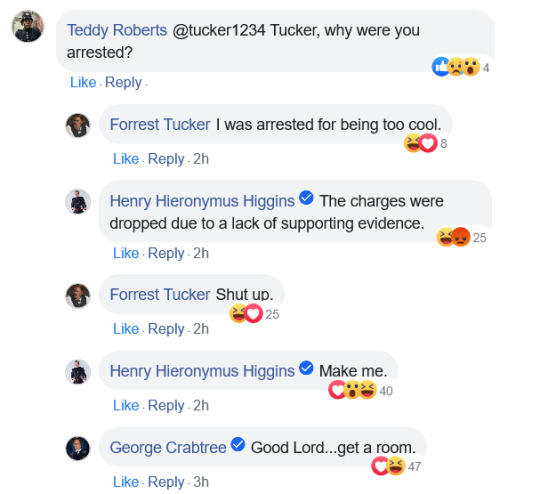
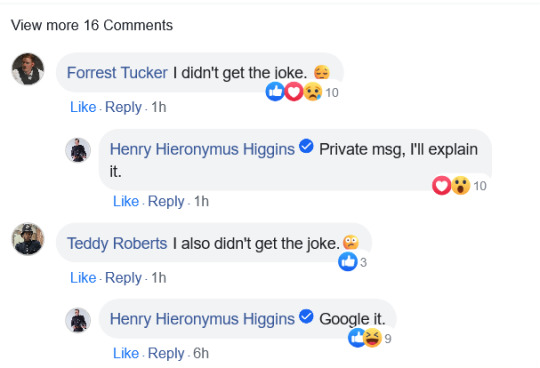
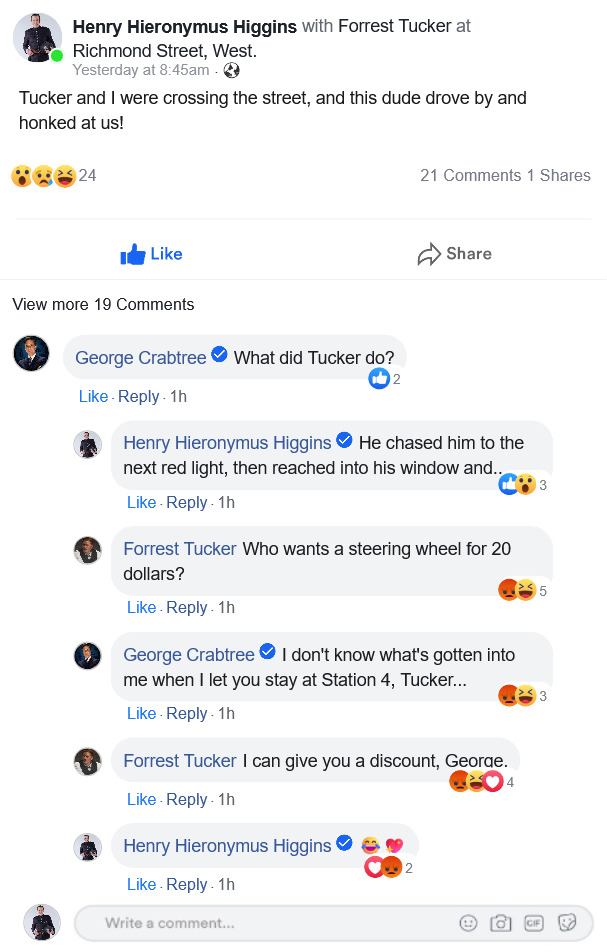
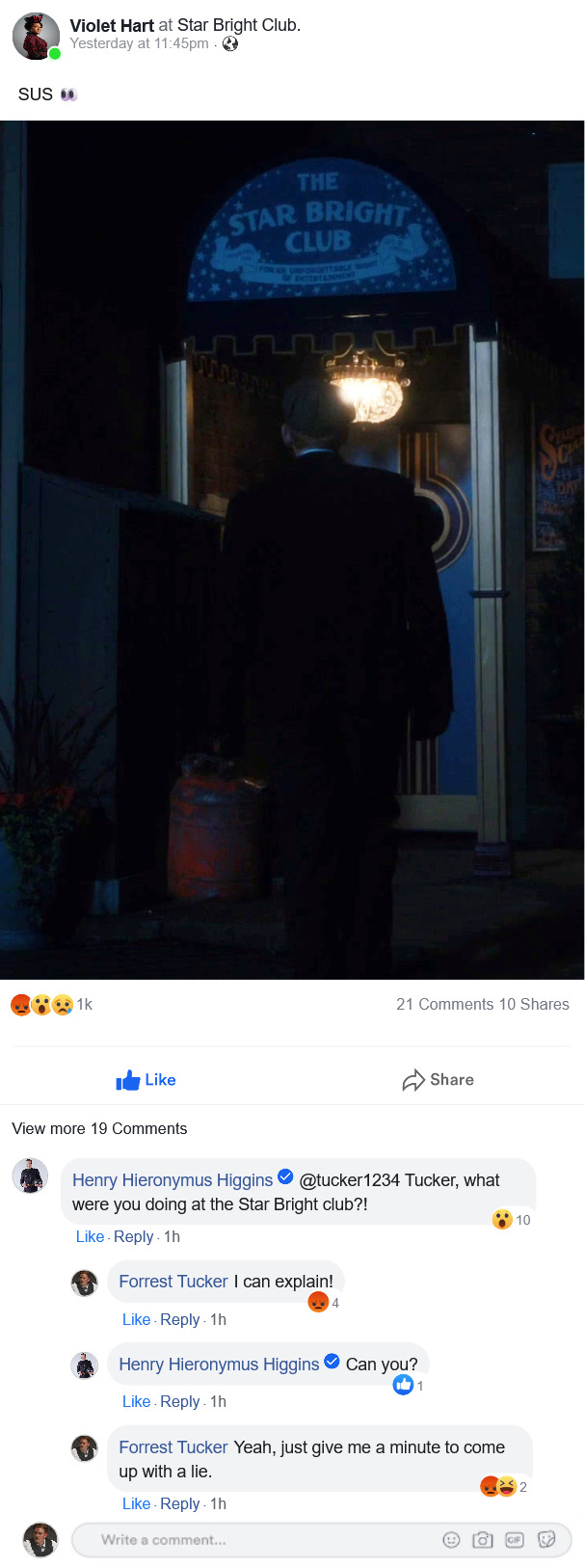
If Murdoch Mysteries had Facebook 😅
#murdoch mysteries#meme#facebook#constable tucker#henry higgins#george crabtree#violet hart#constable roberts#myedit#i'm sorry 😅#incorrect
5 notes
·
View notes
Text
Brackenreid has literally so many kids my god, there are his actual three biological kids, and then there's Higgins, Crabtree, Watts and Mrs. Hart, at LEAST
#Murdoch has only his two actual kids#he's otherwise everyone's strange uncle/mentor and Brackenreid's only peer#at the station house that is#only John and Robert and Watts are also Margaret's kids hhh#(Nomi would be if she didn't already have a good mother)#you can't tell me I'm wrong because I'm right#the man adopts every orphan he can find#cause like fr lets talk about how mrs hart crabtree and watts are all technically orphans in their own right#they all have family but it's either bad or absent or both#and idk what higgins has got going on but it certainly is not a present father#murdoch mysteries#inspector brackenreid#thomas brackenreid#llewellyn watts#detective watts#george crabtree#constable crabtree#henry higgins#constable higgins#mrs. violet hart
99 notes
·
View notes
Text
April Release!

Les Miserables - Sixth US National Tour April 1, 2025 - Medium Observation Video
Cast: Nick Cartell (Jean Valjean), David T. Walker (u/s Javert), Nicole Fragala (u/s Fantine), Delaney Guyer (Cosette), Jake David Smith (Marius), Mya Rena Hunter (Éponine), Matt Crowle (Thénardier), Christian Mark Gibbs (Enjolras), Victoria Huston-Elem (Madame Thénardier), Jackson Parkel Gill (Gavroche), Emerson Mae Chan (Young Éponine), Kyle Adams (Grantaire/Major Domo), Daniel Gerard Bittner (Feuilly/Laborer), Danny Martin (Courfeyrac), Colin Anderson (Combeferre/Champmathieu), Christian Engelhardt (Joly/Fauchelevent), Steve Czarnecki (Factory Foreman/Brujon/Farmer), Tim Quartier (u/s Babet), Jonathan Young (Jean Prouvaire/u/s Bamatabois/Constable), Jeremiah Alsop (Montparnasse/Constable), Christopher Robin Sapp (u/s Claquesous/Innkeeper), Randy Jeter (The Bishop of Digne/Loud Hailer/Lesgles), Greta Schaefer (Little Cosette), Paige McNamara (Factory Girl), Ashley Alexandra (Old Woman), Juliette Redden (Wigmaker), Gracie Annabelle Parker (Innkeeper's Wife), Audrey Hoffman (Ensemble), Kaitlyn Sumner (Ensemble), Ashley Dawn Mortensen (Ensemble), Mikako Martin (Ensemble), Gillian Hassert (Ensemble), Jenna Burns (Ensemble), Nicole Morris (u/s Ensemble)
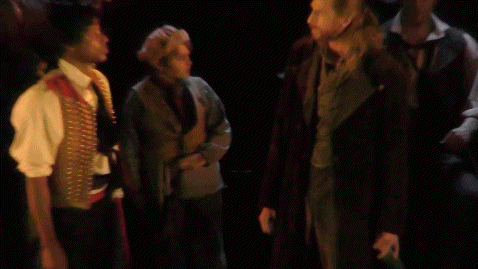
Master Notes: Decent video of David’s Javert! The first 16 minutes up until “At The End of the Day” are pretty rough (due to having to change the way I filmed lol) but other than that it's a pretty good capture! Some shakiness and adjusting throughout but it’s never really an issue. David gives an absolutely STUNNING performance as Javert!
NFT Date: November 1, 2025

Screenshots:https://www.flickr.com/gp/196227588@N02/0n59518vz2
Video is $18

Kimberly Akimbo - First US National Tour March 11, 2025 - Medium Observation Video
Cast: Carolee Carmello (Kimberly), Justin Cooley (t/r Seth), Laura Woyasz (Pattie), Jim Hogan (Buddy), Emily Koch (Debra), Darron Hayes (Martin), Skye Alyssa Friedman (Teresa), Grace Capeless (Delia), Pierce Wheeler (Aaron)

Master Notes: Incredible Capture of Justin’s return to the show! Some washout, shakiness and readjusting throughout.
NFT Date: October 1, 2025

Screenshots: https://flic.kr/s/aHBqjC5AwA
Video is $20

Hard Road To Heaven - Bucks County Playhouse March 7, 2025 - Medium Observation Video
Cast: Jackie Burns (Jenny Dixon), Elizabeth Teeter (Anna Grace Dixon), Leah Hocking (Linnell Dixon), J. Robert Spencer (Hank Dixon), Bryan Fenkart (Jimmy Lee Stewart), Jerry Dixon (Charlie Morgan), Nathaniel Hackmann (Kellin Wayne), Marcus Gladney, Jr. (Marcus Dorsey), Cecilia Trippiedi (Ensemble / Young Jenny), Imani Brissett (Ensemble), Brad Greer (Ensemble), Alec Ludacka (Ensemble), Christopher McCrewell (Ensemble), Claire Newumann (Ensemble), Shannon Mullen (Ensemble)

Master Notes: Excellent Capture of this fantastic new show! A head can be seen on the bottom left of the screen which can sometimes obstruct a little. Some washout, shakiness and readjusting throughout.
NFT Date: October 1, 2025

Screenshots: https://flic.kr/s/aHBqjC5F5E
Video is $20
To Purchase any of these videos please fill out this form https://forms.gle/WyTBFrPdQa1Gvo38A
#mediumobservation#les miserables#musical bootlegs#hard road to heaven#kimberly akimbo#slime tutorial#elizabeth teeter#jackie burns#kyle adams#les mis tour#les mis 2024#les mis#nick cartell#david thomas walker#jake david smith#nicole fragala
12 notes
·
View notes
Text
ohoho this was the episode that really made teddy roberts a fav. kataem oconnor out here stealing the show. argh hes so young. we haven't had a young character like this in a while. and no one really gets him bc hes just a kid from a small town whos trying to do humble good but he's a young black man in the 1910s and he's the first black cop in toronto and his colleagues cant connect to him fully because they cannot grasp his fear and his priorities as someone who is less loyal to the job and less willing to open up and take a risk as he has less experience and more to lose. this hasn't been stated in the show but he gives off the energy of not only knowing of what could happen to him but having witnessed and knowing what could happen to him. as many people in this ep said, he knows more than most about injustice. and he personally just can't put himself on the line like that. his white colleagues expect him to lower his guard down and open up and he's trying to figure out how much of it he can afford. he doesn't know whom he can trust. he's just trying to do good and get by. constable teddy roberts you deserve the worlddddd
#i think i really like this season actually.#this is compelling. this is good shit.#this ep also made me realize how good effie's arc is this season but thats another thing#murdoch mysteries#mm s18#teddy roberts
14 notes
·
View notes